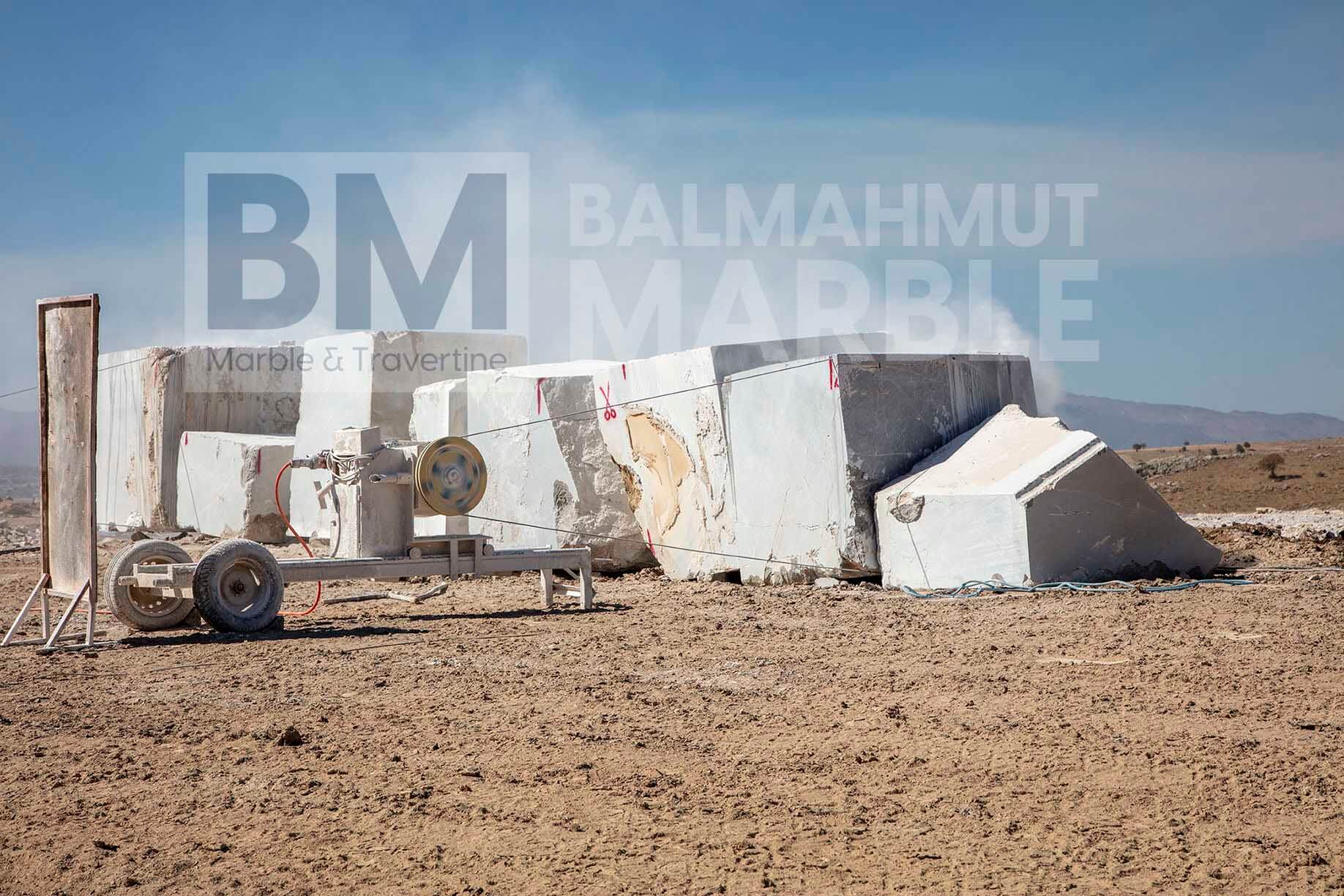Marble has been a valuable material for architecture and decorative purposes throughout history. Due to its natural beauty, durability, and various color and pattern options, marble has become an essential element in many design projects. Marble production is a complex and meticulous process that requires high expertise. This process includes stages such as extraction, cutting, shaping, and polishing of natural stones.
As marble producers, we advocate that the production process should be carried out in an environmentally friendly manner and supported by modern technologies to achieve quality results.
Marble producers in Turkey produce from high-quality marble deposits and export to foreign countries. You can contact our Turkish marble manufacturer company immediately.
In this article, we will examine the details and steps of marble production as Balmahmut Marble, explain the process from raw material to the final product, and discuss its importance.

Marble production is a process that involves a series of operations such as extraction, cutting, shaping, and polishing of natural stones. Here are the general production stages:
Mining Extraction: Marble is a material extracted from natural stone quarries. Marble blocks, which are found in large blocks in marble quarries, are revealed.
Cutting and Block Preparation: Marble blocks are divided into smaller blocks using large cutting machines. This process is carried out to obtain marble slabs with desired dimensions and thickness.
Shaping: Marble slabs are shaped into the desired form using special cutting machines and workbenches. At this stage, the marble can be cut into plates, slabs, tiles, or other shapes.
Polishing and Sanding: The shaped marble surfaces are made smooth through polishing and sanding processes. This process brings out the natural shine of the marble and gives it the desired finishing touch.
Final Processes: Various processes can be applied to achieve the desired appearance and characteristics of the marble. For example, processes such as applying patterns or designs to the marble surface or applying a protective substance to preserve it can be carried out.
Packaging and Distribution: Processed marble products are packaged and distributed according to customer demands. Marble slabs, tiles, or cut pieces are delivered to customers in different sizes and shapes.
Marble production is a process that requires high precision and expertise. The process stages and details can vary depending on the size of the production facilities, equipment, and processing methods.
The raw material of marble is carbonate minerals such as limestone or dolomite. Marble is formed when these minerals accumulate underground and crystallize under pressure through long-term natural processes. Its main component is calcium carbonate (CaCO3).
Limestone is formed through the accumulation of marine shells, corals, algae, and other marine organisms, while dolomite is formed through the influence of magnesium-containing minerals. The accumulation of these minerals in the Earth’s crust and their densification over the years are the primary sources.
Since marble is a stone formed through natural processes and geological interactions, it can contain various colors, patterns, and textures. The influence of different minerals, various layers, or external factors on the marble formation process allows marble to be found with different visual characteristics. For example, marble can be found in many colors such as white, gray, brown, black, and green.
Proper extraction, cutting, shaping, and polishing of marble are of great importance to obtain high-quality products. With the use of modern technologies and environmentally conscious approaches, marble production can be carried out efficiently and sustainably. As a result, the unique and aesthetic properties of marble continue to be an important element that enhances the beauty of structures and interior spaces.